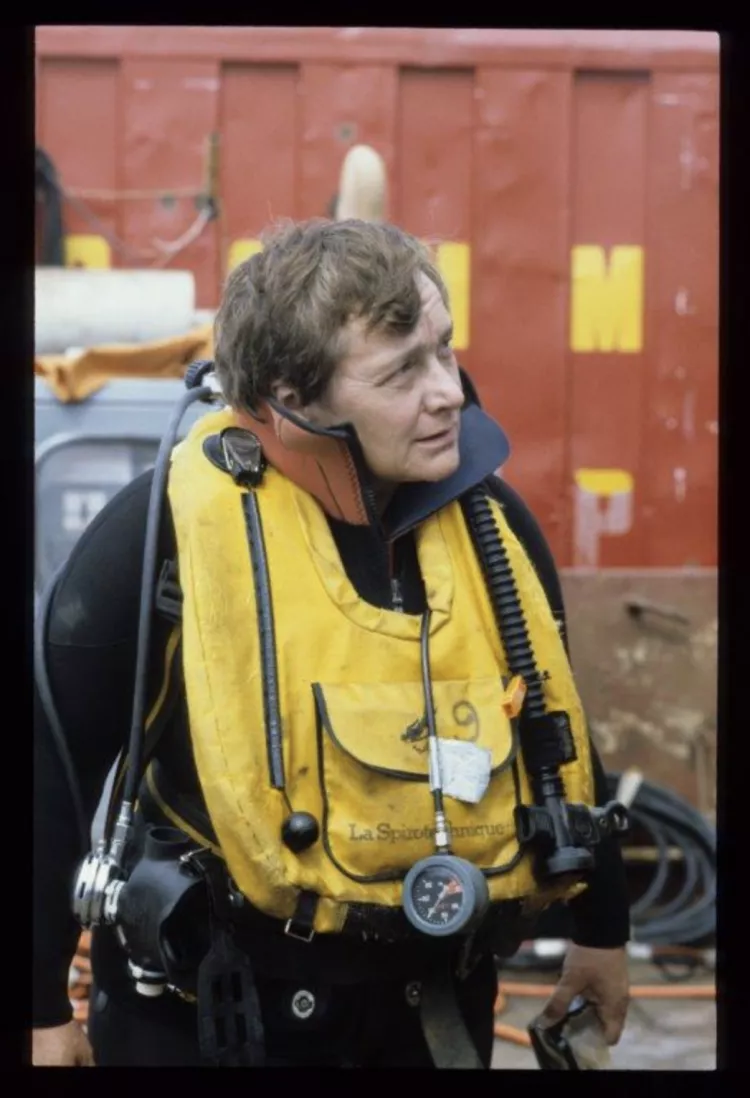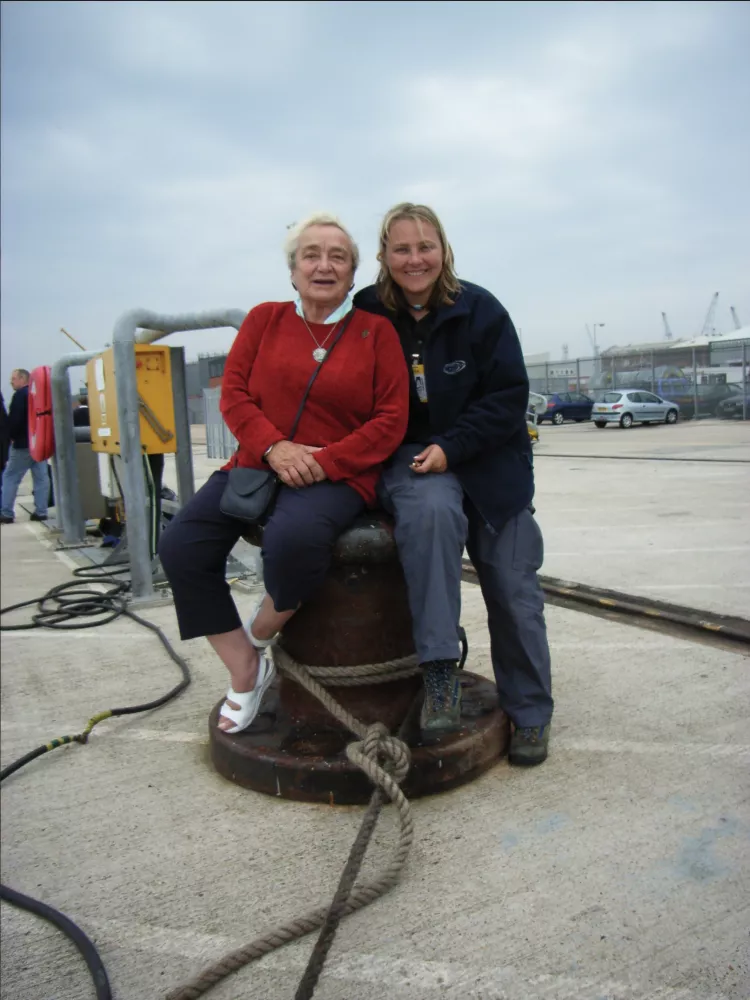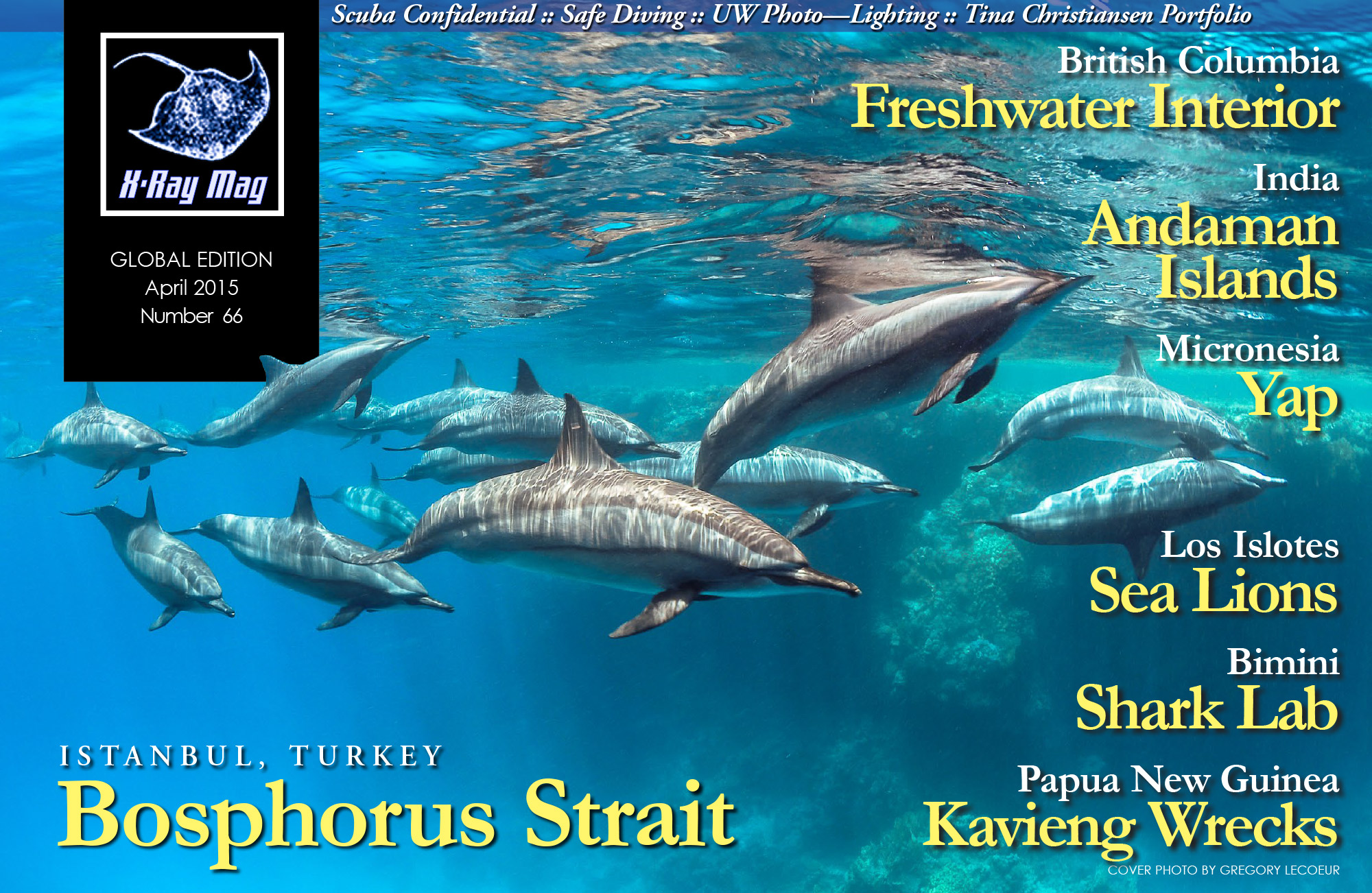Dr Margaret Rule CBE, the British archaeologist who supervised the largest maritime archaeological excavation in history and the subsequent raising of King Henry VIII's warship from the Solent seabed, has died aged 86.
Contributed by
The warship Mary Rose was launched in 1511 and served for 34 years as the flagship of Henry VIII’s navy. She sunk, without warning, a mere two miles outside Portsmouth Harbour on 19 July 1545 with the approximate loss of 500 men and boys. The Mary Rose had been leading an attack on a French invasion fleet. Her 'death' was watched from the shore by Henry VIII, who was stood by Southsea Castle.
Dr Margaret Rule's involvement with the Mary Rose began in 1965. Alexander McKee, an amateur diver and historian with a passion to find the wreck, approached Rule for archaeological help. She agreed to be involved even though it was outside her experience. At the time she did not scuba dive—she was a land archaeologist. Rule had previously supervised the excavation of a Roman Palace at Fishbourne, near Chichester in West Sussex. When the Sussex Archaeological Society built a museum there in 1968, Rule became its first curator. One of the VIP visitors to the museum was the Prince of Wales. This contact would later prove to be vital to the Mary Rose Trust.
Discovery
In 1966 McKee had a useful break. He came across a chart made by the Deane brothers in 1836. It gave the position of the wreck. Many years of seabed searching followed. To begin with Rule spent a fair amount of time sitting in a boat, waiting for the divers to report what they had seen underwater. Pretty soon she realised that the only way she could do her job was was to learn to dive. The ship was located in 1971. Alex Hildred, curator of the Mary Rose, confirmed that this was the first time that remote sensing technology sub-bottom profiling and side scan sonar had been used in England.
"We were very fortunate that on the first dive of the year (5 May 1971), we slightly missed our target—the area that we had been searching. We were about 150 metres to the south. Percy Ackland, who I always called our underwater gun dog, came up and whispered to me, 'The timbers are down there Margaret.'” Ackland had found three of the port frames of the Mary Rose. By some miracle half of the hull had been well preserved by Solent mud. It was as though someone had chainsawed through the wreck from bow to stern and the entire starboard side of the Mary Rose survived.
Maintaining dig standards
To begin with Rule was concerned whether land archaeology standards could be maintained under water. Rule told the Telegraph: “But I learnt you work under water with the same care and ingenuity as you do for a land dig. There you put your site to bed, you put a tarpaulin over your work... You do the same underwater. You don’t leave your site open to be disturbed by currents.”
Rule made hundreds of dives on the site and would often dive in the trickiest of areas and in low visibility conditions. If the team was having a problem deciding something, she would dive the area and make a decision. She would spend her nights, when everyone else had gone to bed, reviewing video runs of the site.
“There is a difference between land archaeology and underwater archaeology because we, the archaeology supervisors and Margaret as director, cannot look over your shoulder into a trench and see what is happening everywhere; you have to rely on feedback from individuals,” stated Alex Hildred.
Excavation
The consequences of finding the ship were enormous. It was decided that the wreck should be excavated in its entirety. The surviving 19,000-odd artefacts were in the main, in extraordinary condition. On land, organic matter is not always so well preserved and it can be difficult to date.
Here the team had a definite time line: 19 July 1545. The archaeologists knew exactly when the objects went into the silt. And the artefacts covered many facets of Tudor life. From thimbles, to quills, leather shoes, combs, coiled rope, a pocket sundial, and a manicure set to name but some.
This logistically difficult and challenging operation had other issues. There was a minefield of bureaucracy combined with legal constraints. At the time historical shipwrecks were not recognised. Rule fought the bureaucrats with tenacity, which was very much in her character. She persuaded the government and the Receiver of Wreck to entrust the extraordinary collection into the hands of the Mary Rose Trust.
Protecting the wreck site
The other worry was the security and safety of the wreck.
“Initially there was no way legally of protecting the Mary Rose when we first saw her in 1971. We had to protect her from looters. And so we never left marker buoys on site and we alerted all our fishermen friends to keep a watching eye on it. We formed a Mary Rose Committee and we applied for a lease from the Crown Estate Commissioners, which cost a pound a year. And having got that lease, we could then defend our patch of mud.” Subsequently on behalf of the Mary Rose Trust, Rule successfully secured the right to retain the exclusive rights of the Mary Rose site.
Rule joined joined the Council for Nautical Archaeology (later the Nautical Archaeology Society). This small group of archaeologists were determined to get a new law in place to help curb the desecration and looting of submerged sites. Rule was a key figure in the campaign to get the 1973 Protection of Wrecks Act passed. Shortly after the act was passed, the Mary Rose was one of the first sites to be designated. Later Rule would become a member of the government’s advisory committee on historic wrecks.
Gaining royal support
What started as an amateur project with virtually no money in the mid 1960s became a multimillion-pound project, thanks in part to Rule's passion, determination and vision. By 1978 the initial excavation work had uncovered an intact ship structure. However, if a full excavation were to go ahead, it was likely the remaining timbers would be destroyed. The decision was taken to raise the ship.
Rule knew that HRH The Prince of Wales' interest in the Mary Rose had been crucial in attracting the funds to raise the ship. The British Sub Aqua Club's then President, Prince Charles—who was also the President of the Mary Rose Trust—had dived the wreck site twice in 1979.
Rule told the BBC: “We couldn’t have done it without him . . . When he goes down [and] says ‘I’ve seen it, I’ve seen it with my own eyes and it can be brought up’, then everyone is supporting us and British industry comes behind us.”
Prince Charles told UK media about diving the Mary Rose in 2014. "I remember my days of diving on the ship out in the Solent in the most impossible conditions, it was like swimming in a kind of lentil soup, you couldn't see anything, or so I thought, until it was under your nose. What I could never get over was the sheer expertise of the archaeologists operating under water."
The remaining hull was very fragile and the technology had not been tried before. The plan was to pass hundreds of bolts through the timbers and attach them to a steel frame. This would then be raised onto a cushioned cradle and brought back to Portsmouth Dockyard.
Raising Mary Rose
The raising of the Mary Rose, after its 437 years at the bottom of the Solent, happened on 11 October 1982. The raising of the hull inspired a number of Brits to learn to dive and many of us remember this momentous day. An estimated 60 million television viewers from around the world watched as the Mary Rose emerged from the Solent. Today the Mary Rose, and the 19,000-odd artefacts recovered from the wreck, are housed in a purpose-built museum, located in the historic Portsmouth dockyard. They are so well preserved, one could never tell they are at least 468 years old.
Prince Charles recently described to the UK press the atmosphere and technical problems on the day the hull was lifted. He explained that the crane used was on loan for only one day, and how he had encouraged the crew to get on with the job, despite technical difficulties including poor weather: “I will never forget the almighty crash as the chains came down and I thought it was all my fault. I think it was worth taking the risk as we have this truly remarkable example of a Tudor warship, which is unique.”
Over 5,000 dives were conducted by hundreds of volunteers as part of the Mary Rose project. Rule observed that it equated to "nine man years on the seabed".
Tribute
Chairman of the Mary Rose Trust, Rear Admiral John Lippiett CB CBE DL paid tribute to Rule: “She made an extraordinary contribution to our nation's heritage. She was an extraordinary woman. Full of resolve and tenacity. Her determination was to achieve against the odds when so many people said this is not possible. She would never take no as the answer.”
It seems only fitting to leave the last word to Rule: “If I had left her there, I would have had much less worried 20 years. But I would not have had the exciting life I have had meeting such tremendous people as a result of the Mary Rose.” ■
SOURCES: BBC, BSAC, FT, GUARDIAN, MARY ROSE TRUST, TELEGRAPH



































